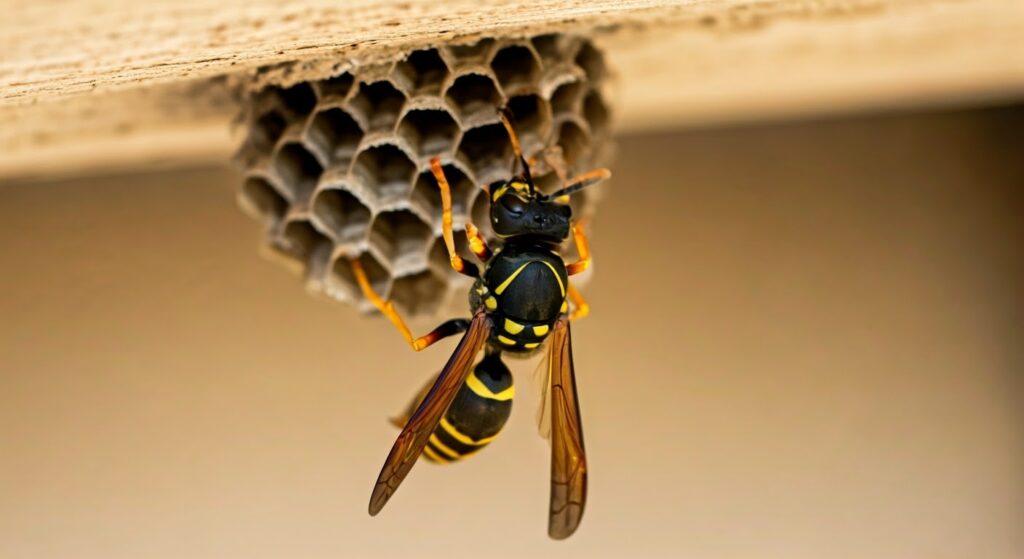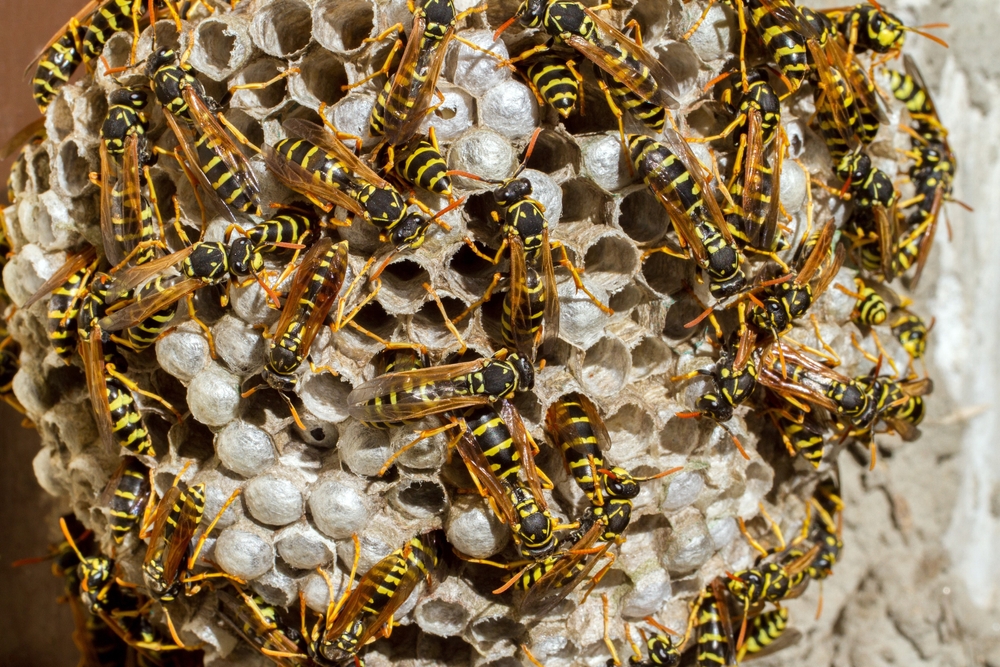
Wasps are common during warmer months, often making their presence known around homes, gardens, and outdoor gatherings. While these insects play a vital role in the ecosystem, their aggressive nature can make them unwelcome guests. Understanding what attracts wasps can help minimize encounters and keep them at bay. This guide explores the factors that attract wasps, their behavior, seasonal activity, and effective prevention strategies.
In North America, commonly encountered wasps include yellowjackets, paper wasps, and hornets. These social wasps live in colonies that can range from a few dozen to several thousand individuals. Unlike bees, which are generally more docile, wasps are known for their aggressive behavior, especially when their nest is threatened. They are highly adaptable and thrive in various environments, building nests in protected areas like under eaves, in attics, or trees and shrubs.
Despite their negative reputation, wasps are beneficial to the environment. They are natural pest controllers, feeding on insects like caterpillars, aphids, and flies, helping to protect crops and gardens from damage. Some wasp species also contribute to pollination, aiding in the fertilization of plants and the production of fruits and vegetables. Their presence indicates a healthy ecosystem, yet their benefits are often overshadowed by their potential to sting and cause discomfort.
Wasps are drawn to environments that offer ample food sources, nesting sites, and favorable conditions for their colonies. They are particularly attracted to areas with abundant insects, sugary substances, and water sources. The presence of flowering plants can also attract wasps as they seek out nectar for energy. Understanding these attraction points can help homeowners make their surroundings less appealing to wasps.

Wasps have a strong sense of smell and are particularly attracted to sugary foods and beverages. During late summer and early fall, wasps shift their diet from proteins to sugars, making them especially drawn to foods like fruits, sodas, and desserts. If you’re having a picnic or barbecue, leaving sugary drinks or sweet treats exposed can quickly attract wasps.
In addition to sugars, wasps are also attracted to protein sources, such as meat. Yellowjackets, in particular, are known to scavenge for meat to feed their larvae. This means that outdoor cookouts with grilled meats can become a magnet for wasps if food is not properly covered.
Garbage is another significant attractant. The smell of decaying organic matter combined with leftover food can lure wasps to trash bins and compost piles. Ensuring that garbage is securely sealed and disposing of waste properly can help reduce wasp encounters.
Wasps also like bright shade or color and strong fragrance. Brightly colored flowers attract wasps looking for nectar, but artificial colors can have the same effect. Wearing brightly colored clothing, especially yellow or floral patterns, can inadvertently attract wasps. Strong perfumes or scented lotions can also lure wasps closer.
Outdoor decorations like colorful umbrellas, tablecloths, or garden furniture can attract wasps as well. While it’s not practical to eliminate all bright colors, being mindful of these attractants can help you avoid drawing wasps to areas where people are congregating.
Like all alive animals, wasps require water to live. They are particularly attracted to standing water sources, such as bird baths, pet bowls, and swimming pools. Even small amounts of water, like puddles or the condensation on a drink can, can attract wasps. During hot, dry weather, wasps may become more aggressive in their search for water, increasing the likelihood of encounters with humans.
To reduce wasp attraction, it’s important to eliminate sources of standing water around your home. This includes emptying bird baths regularly, keeping pet water bowls indoors, and ensuring that any containers that can collect rainwater are stored upside down or covered.

Wasp activity is closely linked to the weather and changing seasons. In the spring, queen wasps emerge from hibernation and begin building nests. During this time, wasps are primarily focused on finding protein sources to feed their larvae, which helps the colony grow. As the weather warms, wasp activity increases, with peak activity typically occurring in late summer and early fall.
In late summer, the dynamic within wasp colonies begins to shift. The larvae start to mature, and the need for protein decreases. Wasps then turn their attention to sugary foods to fuel their energy needs. This is why wasps become more aggressive and persistent around food and drink during the latter part of the season.
Late summer and early fall are the most common times for human-wasp encounters. By this time, wasp colonies have reached their peak population, and the workers are actively foraging for food to sustain themselves and the colony. The shortage of natural food sources, combined with the wasps' increased craving for sugars, leads them to seek out human food more frequently.
During this period, wasps can become more aggressive, especially if they feel threatened or if their nest is disturbed. This is why it’s important to be extra cautious when spending time outdoors in late summer and fall, particularly around food and drinks.
Wasp nests are typically built in sheltered areas that provide protection from the elements. In natural settings, this might include tree branches, rock crevices, or underground burrows. However, in residential areas, wasps often choose locations such as attics, sheds, eaves, or even wall cavities to build their nests.
As the summer progresses, wasp nests can grow quite large, sometimes housing thousands of individuals. These nests become more noticeable and problematic as the season goes on, particularly if they are located near areas where people live or gather. The proximity of a nest to human activity significantly increases the likelihood of wasp encounters.
One of the most effective ways to prevent wasp problems is to manage food and waste properly. Here are some practical tips:
In addition to managing food and waste, reducing potential nesting sites and other attractants can significantly decrease wasp activity around your home:
If you find a wasp nest near your home, it’s important to approach the situation with caution. Attempting to remove a nest on your own can be dangerous, especially if the nest is large or if the wasps are already agitated. Here are some guidelines:
Wasps are particularly attracted to sugary foods and beverages, especially during late summer when their diet shifts towards sugars. Common attractants include ripe fruits, soda, juice, and sugary desserts. Meat, especially at barbecues, can also attract wasps as they seek protein for their colonies.
As summer ends, wasps’ food sources dwindle, and their focus shifts to finding sugary foods to sustain themselves. The increased competition for food can make wasps more aggressive and persistent, leading to more encounters with humans. Additionally, as wasp colonies reach their peak size, the number of foraging wasps increases, raising the chances of interactions.
To prevent wasps from nesting near your home, seal any cracks or gaps in your house’s exterior, keep your yard well-maintained, and remove any potential nesting sites such as abandoned sheds or piles of debris. Additionally, regularly check under eaves, decks, and other sheltered areas for early signs of nest-building and remove small nests before they grow.
Yes, certain plants can attract wasps, especially those that produce nectar. Flowers with bright colors and strong scents are particularly appealing. If you have flowering plants in your garden, it’s important to be aware that they may attract wasps. However, these plants are also important for pollinators, so balancing your garden’s needs with wasp prevention is key.
If you discover a wasp nest close to your living area, assess the situation carefully. For small nests, you may be able to remove them yourself using insecticide and protective gear. However, for larger nests or nests in difficult-to-reach locations, it’s best to call a professional pest control service to handle the removal safely.
Professional pest control that delivers exceptional value to your home or business.
© 2024 Pest Free Red Wing Company. All rights reserved.